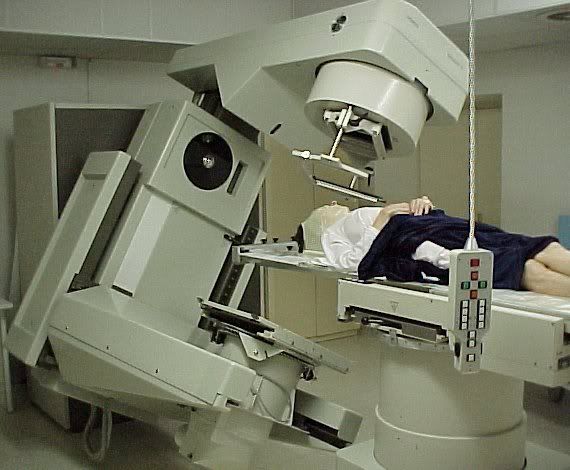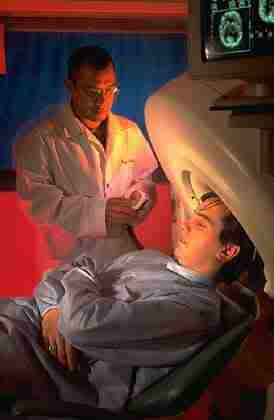Caregivers' Role in Breaking Bad News: Patients, Doctors, and Nurses' Points of View.
"Bad news" is defined as information which worsens the individuals' point of view on their future and may cause long-lasting mental and behavioral problems. Bad news is usually divided into 2 levels: the level that creates a temporal interruption in carrying on with life, such as replacing a hip joint, and the level that threatens the continuation of life, usually related to the diagnosis of a malignant disease.
The issue of breaking the "bad news" has been discussed since the dawning of medicine. Hippocrates, the greatest doctor of Ancient times, recommended concealing any information that may cause despair and worsen the patient's situation. In this context, the first ethical code in medicine from 1847 guided doctors to avoid breaking bad news to the patients because it might shorten their life. As a result, the approach that "what patient's do not know will not hurt them" became prevalent throughout the world for many years, and most doctors did not tell their patients with cancer about their diagnoses. However, evidences over the years showed that many patients with cancer (50-90%) wanted to be fully informed (for better or for worse) about tests results, diagnosis, prognosis, and treatment options and seemed to be interested in being active in the decision-making process. The patient has a moral and legal right to receive accurate and reliable information, and the doctor's responsibility is to deliver the diagnosis clearly, ensuring that the patient fully understands.
Many reports suggest that the way in which the bad news is delivered affects the patient's continued functioning and decision making. When unfamiliar medical terms are being used and the information is hazy, or when there is no coordination between the caregivers concerning the amount and type of information, the patient's tend to feel confused, anxious, and even angry. In contrast, the appropriate planning and conduct of breaking bad news helps the patient to deal with the situation.
Traditionally, breaking bad news was considered to be the doctors' role, for it entails delivering diagnosis and prognosis. Yet, in fact, a multiprofessional team takes part in it on different levels, times, and functions. When patients with cancer receive their diagnosis, they tend to lose part of the information delivered to them due to shock, pain, and anxiety; consequently, they turn to other staff members, especially nurses, seeking information that will confirm and validate the things they "heard."
Nevertheless, the caregivers seldom receive guidance and counseling and find it difficult to cope with the task. Although they have to break bad news early on their professional career, it seems that until recently, doctors, nurses, and social workers did not receive appropriate training toward this mission. Even though, lately, guidelines for breaking bad news were published, most of them originated from caregivers' impressions and personal opinions. They are not based on scientific evidence. As such, it is not clear what information should be delivered during the meeting, who should attend it, what are the patterns of support and communication, or whether they are beneficial for the patients.
Discussion
The research attempt was to encompass several areas related to the ways of breaking bad news from 3 points of view: patients, doctors, and nurses. The first issue examined was who should attend breaking bad news meetings, apart from the patient and doctor. The research findings reflect an agreement between subjects on the high importance of incorporating a family member. Importance was also regarded to the incorporation of a nurse, although nurses rated it higher than doctors and patients. The essentialnesses of a nurse's results form their role as an "interpreter" of the bad news to the patient.
In Dewar's study, the nurses pointed out that they helped the patients in interpreting the information received from the doctor because often the patients did not understand what was delivered to them due to the complexity of the terminology, or that they were too distraught to understand. Furthermore, to receive, confirm, and validate information, the patients tend to ask various caregivers the same questions and compare between the answers. When the nurse is excluded from the breaking bad news process, she has no knowledge on what was delivered to the patient, so when she is approached with questions, she fears that contradicting information will confuse the patient and be deemed unreliable.
The research findings indicate differences between patients and caregivers (doctors and nurses) in the issue related to the type of information that should be delivered to the patient, its quantity, and timing. The patients attributed higher importance than the caregivers to delivering the message as close as possible to the diagnosis. Presumably, these differences result from their feeling that there was a delay in breaking the bad news, and that it was not delivered right after the diagnosis.
In addition, we found that patients rated much higher than the doctors the need in receiving information on treatments and side effects with the diagnosis. Although one could assume that this finding among doctors results from their desire not to burden the patient with excessive information from the onset, one should consider that the patients are aware of their needs and the type of information they wished to receive. Reinforcement to the findings of the current research was found in other researches showing that most patients with cancer want to receive complete information on the treatment possibilities and what they entail, for it allows them to make knowledgeable decisions. It is worth noting that all the participants in the research considered it forbidden to lie to the patient, even when it is done to give hope. Not only does it expresses disregard to the patient's autonomy, for patients will discover for themselves the nature of their illness, but will lead to patients losing their confidence in the caregivers.
All of the participants agree that it is not advisable to deliver information regarding the predicted life expectancy with the illness. Lamont and Christakis explains that it is hard to accurately estimate such issues, and therefore, it is better to avoid it. In general, on the issue of delivering information, one should consider that the information is the patients property, as their body is, and has to be managed only with their consent. Other aspects of the issue are presented in an opposite case in which the patient have agreed to pass a diagnostic examination but refused to receive its findings.
Concerning the delivery of written information, it was rated by the patients in the research as much more important than the manner in which the doctors regarded it. Other research as well teaches that it is not typically to include information sheets during the breaking of the news. Nevertheless, one should consider that while the patient received the bad news, his/her attention is distracted by shock, pain, and anxiety. As such, written information could serve the patient's needs by providing an explanation and validation to the things just heard.
The research findings point to the importance all the subjects gave to the nonverbal support patterns, including the patient's ability to express feelings, caregiver's emphatic silence, and support through touch. The nurses, especially, rated these issues very high. In Dewar's study, it has also been found that nurses perceived their duty as mainly supporting the patient in difficult moments. Yet, in a different research conducted among nurses, doctors, and social workers, the participants reported that less typical behaviors at breaking bad news were support through touch and allowing room for the patient to express emotions. One of the main difficulties caregivers face is how to react to a patient's emotions that might include anger, sorrow, anxiety, and so on. Evidence from research findings suggest that some of the caregivers respond through limiting their interaction with the patient and maintaining an image of professional distance. Others adopt the position that psychological assistance is not part of their job.
As to the verbal communication patterns, the research findings indicate that the participatory sentences were rated by the patients as very helpful, even though doctors used them intermittently. The encouragement sentences also received high ratings among patients; however, nurses rated their use significantly lower in comparison. General agreement was achieved concerning the use of the hopeless sentences as coping inhibitors. These findings, found to be compatible to other research findings, clearly point that strategies for comforting the patient are the use of both participatory and encouraging sentences which concentrate on the present, and, at the same time, avoidance of using hopeless sentences and those that encourage in a negative manner, such as "we all die eventually."
It has been especially interesting to discover that the sentence "it'll be alright" was indicated by the patients in the current research as very helpful, even though caregivers seldom used it. It is possible that they perceive it as one that might instill false hopes in the patient. It seems this sentence is best understood in a cultural context, for "it'll be alright" is a key phrase in the Israeli society used as slang for encouraging and noncommitting. And as such, it applies even in illness.
The last issue examined in the research was the caregivers' emotions while breaking bad news and the factors that affect them. From an analysis of the findings, it seems that the sense of identification with the patient was most prominent, followed by the sense of helplessness, ranked even higher among nurses. In addition, it has been found that older age among patients is not a mitigating factor on the caregivers' breaking bad news. Because doctors rated their experience higher than nurses, it can explain why nurses reported more on a sense of helplessness. These findings resemble with other research findings which identified, among the elements of the difficulty faced by the caregiver, a sense of helplessness and frustration over the inability to change the truth and preventing from the patient information that might harm.
In the current research, the caregivers rated very low emotions of fear of the patient's accusation and anger, inability to answer their questions, and lack of time to support the patient. These findings contradict other researchers that reported about emotions of fear of a patient's accusation and an inability to answer their questions. Other inhibiting factors identified were lack of time to sit and talk with the patient and lack of training in breaking bad news. As to training, the current research found that the caregivers were not qualified on the breaking bad news issue. These findings agree with the other research findings which point that caregivers do not receive training and counseling and hence find this task daunting.
This research has several limitations. First, the sample from each group was small and was taken from a single medical center in Israel; therefore, the findings' generalization capability is limited. In addition, the extent to which personal variables, such as gender, age, ethnicity, support systems, basic character, etc, influence was not examined. It is recommended that future research in the field will increase the range of subjects and examine the influence of the personal variables on breaking bad news. Furthermore, because the research did not include open-ended questions, the subjects' answers were confined to possibilities given in the questionnaire. It is possible that, if given room to express themselves in open-ended questions, more issues not considered will arise. It is thus recommended to conduct a qualitative research.
Despite its limitations, this research has several salient advantages, most of all the comparison conducted between 3 main groups: patients, doctors, and nurses. Few studies examined what the doctor does, and fewer focused on the patients' or nurses' perceptions. To the best of our knowledge, this is the first research conducted in Israel that examines the breaking of bad news from these 3 points of view. This multidimensional picture could bridge the gap between what patients want and what caregivers do. If so, it is possible that the research findings will benefit in designing guidelines to breaking bad news and will assist in forming a workshop program for furthering team skills.
Even though the literature is rich in guidelines and recommendations on how to break bad news, most of them are not based on research findings. Therefore, the current research aims at adding another layer to the growing body of knowledge in the field. The recommendations this research proposes are as follows:
1. It is appropriate that the breaking of bad news will be as close as possible to the diagnosis.
2. During the process of delivering the bad news, it is recommended to incorporate a family member and a nurse.
3. The information delivered in the meeting should also include reference to treatments and side effects, and it is recommended that the patient be given written information.
4. The patients should be allowed room to express emotions (such as anger, and crying) and also support them with an empathetic silence and a comforting touch.
5. The verbal communication should be based on participatory and encouraging sentences and be refrained from the use of sentences that try to encourage in a negative approach.
6. It should be considered that breaking bad news is more of a process than a single action, for the patient needs time to develop awareness to the situation and internalize the news.
7. Doctors and nurses should be prepared to a wide range of possible reactions from the receivers of the news and be patient and understanding even when the patient try to validate the situation with repetitive questions.
8. Because breaking bad news is a task that requires skill and planning, caregivers should be trained to perform it properly.




0 Comments:
Post a Comment
<< Home